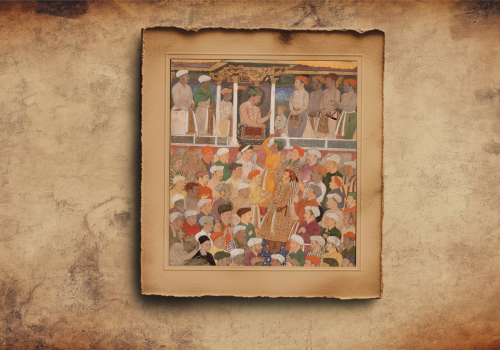As a poet he wrote on a wide range of subjects social, political, ethical and spiritual. His language is a mixture of Braj, Hindi and Punjabi, commonly known as Sadh Bhakha and his script is Gurmukhi. Of his eleven poetic works only two were published in lithographed editions from Lahore during the early 1890`s and another one in Devanagri transliteration from Lucknow in 1875. The rest in manuscript form arc preserved in different librariesCentral Public Library, Motibagh Palace Library, Bhasa Vibhag Library and the Punjab State Archives, all at Patiala, and in the Khalsa College Library at Amritsar.
Birad Pratdp, written in 1803, deals with mythological and ethical themes. Sdr Rdmdyan (1808) is the poet`s version of the epic in an abridged form. Can Prastdr Prakash (1818) is a treatise on Indian prosody. Rdjniti Bdvd Ram DdsJi Dt, is a statement of the ethico political views of the author in dohd and KundaUd metres. It was written in 1825.5am Bdvd Ram DdsJiDi (1826) mainly focuses on the theme of Guru`s grace and the disciple`s selfless service. Dropati Charitra (1842) is a brief narration in verse of the Mahdbhdrata story of Draupadi`s disgrace and her rescue through the intervention of Krsna. Keddr Panth Prakash (1853) is a versified travelogue describing Maharaja Narinder Singh`s pilgrimage to Kedarnath and Badrinath, in the Himalayan tract of Uttar Pradesh.
Ath Sdr Vashist Savaiyyd (1855) is a series of 108 stanzas in savaiyyd metre glorifying God and His saints, and proclaiming the virtues of a temperate moral living. Bdrdnmdhd Bdvd Ram Das Ji Kd (1859) is a poem in the popular mode of bdrdmdhd (lit. twelve months), in which poets deal with a usually romantic theme in a kind of acrostic, the stanzas beginning successively with the names of the months of the year. Ram Das` poem depicts a devotee`s craving for the Lord. The dates of the remaining two works, Ydtrd Rikhikesh Di and Ath Chhatis Varni Tathd Chhanddvali are not known.
The former in KundalTa metre discusses various practices which enable a devotee to reach his goal and the latter is a type of acrostic, each stanza commencing with the successive letters of the alphabet. The theme is the spiritual way leading to true knowledge. The poet begins his works with the Mul Mantra recorded in its abbreviated form.
References :
1. Rose, H.A., ed., A C;/o,Mrtry of the Trii>es find Castes of the Punjab and North-West Frontier Province. Lahore, 1911-19
2. Randhir Singh, Udasi Sikhan di Vithid. Amritsar, 1959 Gr.S.


